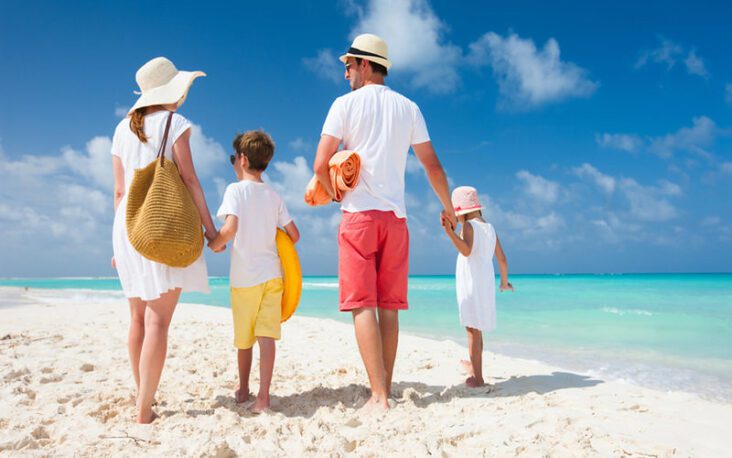Embarking on a European adventure with your family creates memories that will last a lifetime. From exploring ancient castles that bring history to life for your children to relaxing on Mediterranean beaches and savoring gelato in Italian piazzas, traveling around Europe with family offers enriching experiences for all ages. This comprehensive guide will help you navigate the planning, logistics, and day-to-day realities of European family travel to ensure your journey is as seamless and enjoyable as possible.

Why Europe is Amazing for Families
Europe offers an unparalleled blend of history, culture, convenience, and family-friendly attractions that make it ideal for travel with children of all ages. Unlike other destinations that might cater primarily to adults or require extensive wilderness trekking, Europe balances educational experiences with pure fun.
Key benefits of travel in Europe with kids include:
- Rich Educational Value: Where else can your children walk through medieval castles, stand before Renaissance masterpieces, or touch stones laid by ancient Romans? Europe turns history textbooks into tangible experiences.
- Excellent Transportation Infrastructure: With extensive train networks, family-friendly public transit, and well-maintained roads, getting around is straightforward, even with little ones in tow.
- Proximity of Diverse Experiences: Within hours, you can travel between dramatically different landscapes, languages, and cultures—from Alpine mountains to Mediterranean beaches.
- Child-Friendly Culture: Many European countries genuinely welcome children in restaurants, museums, and public spaces, often offering family-specific amenities and discounts.
Parents often worry about language barriers, unfamiliar foods, or keeping children entertained across time zones. Yet these challenges are precisely what make European family travel so rewarding—offering opportunities for children to develop adaptability, cultural awareness, and global perspective.
Planning Fundamentals: When, How Long, and Legal Requirements
When to Go
The timing of your European family adventure significantly impacts your experience:
- Summer (June-August): Peak tourist season offers warm weather and extended daylight hours but comes with crowds and higher prices. Ideal for beach destinations and mountain regions.
- Shoulder Seasons (April-May, September-October): Often the sweet spot for family travel—milder weather, fewer crowds, and lower prices while most attractions remain open.
- Winter (November-March): Christmas markets and ski resorts shine, but shorter daylight hours and variable weather may limit some activities. Southern European destinations like Spain, Portugal, and Sicily offer milder winter escapes.
For families with school-age children, consider traveling during spring break or extending summer holidays by a week on either end to capture some shoulder season benefits.
Trip Duration
When traveling around Europe with family, duration significantly impacts how much you can reasonably see without overwhelming everyone:
- 1 Week: Focus on a single country or even a specific region (e.g., Tuscany in Italy or Andalusia in Spain)
- 2 Weeks: Explore 2-3 neighboring countries or one larger country in depth
- 3+ Weeks: Consider a multi-region European tour, allowing for slower travel pacing with built-in rest days
Remember that family travel requires a slower pace than solo or couple travel. The formula that works for many families is: Whatever you’d plan for adults, cut the destinations by half when traveling with children.
Legal Requirements
Before embarking on your European family adventure, ensure you have:
- Passports: Valid for at least six months beyond your return date for all family members, including infants
- Visa Requirements: Most North Americans can stay in the Schengen Area (26 European countries) for up to 90 days without a visa
- ETIAS Authorization: Beginning in 2025, non-EU visitors need to register with the European Travel Information and Authorization System before travel
- Travel Insurance: Comprehensive coverage for health emergencies, trip cancellation, and lost luggage is essential for families
- International Driving Permit: Required alongside your regular license if you plan on renting and driving a car in Europe with family
Choosing Your Destinations: Where to Go in Europe with Kids
Europe offers endless possibilities for family exploration, but some destinations particularly shine when traveling with children.
Kid-Friendly Countries
- Italy: Combines history, art, and kid-friendly cuisine with welcoming attitudes toward children
- Netherlands: Flat, bicycle-friendly landscapes, interactive museums, and excellent English proficiency
- Portugal: Affordable, compact, with beautiful beaches and a relaxed pace perfect for families
- UK: No language barrier for English speakers, world-class museums (many free), and literary connections from Harry Potter to Peter Rabbit
- Switzerland: Exceptional public transportation, breathtaking natural settings, and clean, safe cities
Best Cities for Family Travel in Europe
- Barcelona, Spain: Colorful Gaudí architecture, beaches within the city, and walkable neighborhoods
- Copenhagen, Denmark: Home to Tivoli Gardens amusement park, bike-friendly streets, and the original LEGO store
- Edinburgh, Scotland: Castle explorations, Harry Potter inspiration, and the fascinating Camera Obscura
- Munich, Germany: Englischer Garten with surfing opportunities, excellent public transportation, and the Deutsches Museum for curious minds
- Rome, Italy: Ancient history comes alive with gladiator schools, gelato breaks, and pizza-making classes
Beyond Major Cities
Don’t overlook smaller destinations that can be magical for families:
- Garmisch-Partenkirchen, Germany: Alpine adventures and the fairytale Neuschwanstein Castle nearby
- Sintra, Portugal: Colorful palaces that seem straight from fantasy books
- Lake Bled, Slovenia: Fairytale island, castle, and outdoor activities
- Antibes, France: More relaxed than Nice or Cannes, with excellent beaches and Marineland
The How: Getting Around Europe with Family
Transportation choices significantly impact your family’s European experience, affecting everything from cost to convenience to the journey itself becoming part of the adventure.
Train Travel in Europe with Kids
Trains often represent the ideal balance of convenience, comfort, and experience when traveling around Europe with family:
- Pros: No airport security lines, city-center arrivals, freedom to move around, scenery viewing
- Cons: Limited luggage space, potentially complex connections with little ones
- Tips: Consider first-class for family compartments on longer journeys; book night trains for longer distances to save on accommodation
Renting and Driving a Car in Europe with Family
For maximum flexibility, especially in rural areas:
- Pros: Door-to-door convenience, flexible schedule, ability to access off-the-beaten-path destinations
- Cons: City parking challenges, unfamiliar road rules, potential for traffic in tourist areas
- Tips: Reserve car seats in advance; ensure your rental includes unlimited mileage; familiarize yourself with local driving laws (like ZTL zones in Italian cities)
Flying Within Europe
Sometimes necessary for covering longer distances:
- Pros: Quick connections between distant points, sometimes surprisingly affordable with budget airlines
- Cons: Added airport time, baggage fees, potential stress with connections
- Tips: Book early morning flights to reduce delay risks; check family pre-boarding policies
Accommodation Strategies for European Family Travel
Where you stay significantly impacts both your experience and budget when traveling around Europe with family:
- Hotels: Look for family rooms or connecting options; many European hotels offer family-specific amenities
- Apartment Rentals: Provide space, kitchen facilities, and neighborhood experiences; ideal for stays of 3+ nights
- Farmstays/Agriturismo: Particularly in Italy and France, these rural accommodations offer space, authentic experiences, and often built-in activities
- Hostels: Many modern European hostels offer excellent family rooms with private bathrooms at budget prices
When booking accommodations, prioritize location near public transportation and with walkable access to basic amenities like grocery stores and pharmacies.
Balancing Activities for All Ages
Creating an itinerary that engages both parents and children of different ages requires thoughtful planning:
- Follow the “2/3 rule”: For every three activities, ensure two will genuinely interest your children
- Schedule downtime every day—playground visits, gelato breaks, or simple hotel relaxation
- Alternate museum days with outdoor adventure days
- Consider context-setting through age-appropriate books, movies, or games before visiting historical sites
The key to successful travel around Europe with family isn’t seeing everything—it’s creating meaningful experiences that resonate with each family member while building a shared adventure narrative together.
Ready to Begin Your European Family Adventure?
This guide serves as your starting point for planning an unforgettable European family journey. In our detailed follow-up sections, we’ll dive deeper into specific aspects of family travel in Europe, from budgeting strategies to packing essentials, dining with picky eaters, and age-specific destination recommendations.
Remember that the perfect family trip to Europe balances ambition with relaxation, planning with spontaneity, and adult interests with childhood wonder. With thoughtful preparation and a flexible mindset, your European family adventure awaits!



